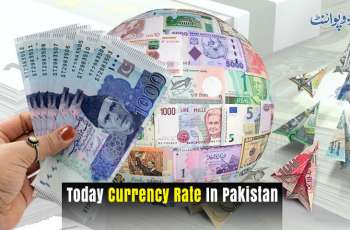WASHINGTON (Pakistan Point News / Sputnik - 21st April, 2020) The first month of a coronavirus-induced lockdown levied a hefty tithe on the US economy, wiping out 22 million of its 165 million jobs. Temporarily or for good, remains to be seen.
In the last four weeks, one in eight workers applied for unemployment insurance benefits, the worst streak of job losses on record. This is a 2,200 percent increase over the pre-virus period and five times the number of jobless claims in the worst four weeks of the Great Recession, according to the Economic Policy Institute (EPI), a Washington-based think tank.
It believes that recent losses translate into an unemployment rate of more than 15%, though official data for April will not be released until May 8. The figure in March stood at 4.4 percent, the Labor Department said last week. The EPI warns that statistical gauges even when they start catching up with coronavirus realities may still be misleading as "jobless workers are only counted as unemployed if they are actively seeking work, which is impossible right now for many."
The EPI suggests that the labor market has not bottomed out yet and does not foresee its complete rebound in 2020 even under the best-case scenario.
"Based on GDP forecasts, we project that near-term job losses could exceed 30 million, even taking into account the relief measures already in place," it's paper said. "At this point it appears that even under the best-case scenario - a rapid bounceback in the second half of the year - the unemployment rate will still be close to 10percent in the fourth quarter of this year."
With over 90 percent of the US economy under full or partial lockdown, there are few sectors unaffected. The services - stores and restaurants, movie theaters and hotels, barbershops and beauty parlors, predominantly small businesses with a large portion of non-regular personnel - bear the brunt of the pandemic.
Industries, even if allowed to continue their operations, suffer from the slump of demand, the most dramatic arguably at the oil market where prices hover around decades' lows.
Even healthcare institutions are absorbing salary cuts or already losing jobs to the suspension of elective medical procedures.
As part of its unprecedented $2 trillion stimulus package the US administration has allocated $350 billion in forgivable loans to small businesses to pay their employees during the crisis. The program, known as a Paycheck Protection Program, has quickly run out of funds, but the White House is reportedly close to an agreement with the Congress on replenishing it.
The government relief also includes direct payments to around 175 million Americans, 80 million of whom have already received checks of around $1,200 - an extra cushion for some and a lifeline for many.
The White House, eager to see the country open, declared that the pandemic has passed its peak and devised Federal guidance how to jumpstart the nation's economy and gradually restore the normalcy. The guidance left it up to the states to decide when to lift restrictions. Many governors are hesitant and complain the shortage of testing capacities to gauge the coronavirus spread. They are often pushed to reopening by local citizens who stage street protests across the country demanding an end to stay-at-home orders.
A cafe in Georgetown, one of many in a trendy Washington neighborhood, usually bustling with tourists and now virtually empty, used to employ a dozen of workers before the outbreak and now keeps just two full-timers. The rest, part-time students, left as soon as the local university was shut down. The cafe counts not only on the government, but also on community aid.
"Georgetown community is helping us a lot promoting our gift cards. Once everything is fine they can come and use their gift cards. It is a little bit of cash flow for our baristas," the owner Sena told Sputnik.
Unlike some, her cafe opted not to serve take-away or online orders, but close until the crisis is over.
INEQUALITY IN THE FACE OF CRISIS
The EPI study says that women are disproportionately hard hit by layoffs accounting for almost 60 percent of the newly unemployed in March. Although there are no breakdowns of labor statistics by race and ethnicity yet, the Institute expects it also to be the case with black and Hispanic people, whose overrepresentation in "frontline service jobs" makes them more vulnerable to the disease itself too.
Economic vulnerability is tantamount to healthcare risks in the United States which is unique among rich countries in tying medical insurance to employment. According to another EPI study, 3.5 million laid off workers likely lost their employer-provided health insurance in the last two weeks of March. It's on top of 27 million Americans who had no insurance even before the pandemic.
Pavel, a manager in an upscale Washington restaurant, is one of those who was deterred by unaffordable high option costs.
"I had plans to buy an insurance for 2020, but decided to pass after I saw their offer - $550 per month with a deductible of $7,000," he explains. "If I need a medical operation and it costs, say, $10,000, than I would have to pay $7,000 myself with the rest $3,000 covered by the insurance."
The US administration went to lengths to make healthcare more affordable amid the outbreak, including greater flexibility of insurance options and conditional offers to reimburse to hospitals coronavirus treatment costs. But since surprise bills are still possible, the NPR public radio has a word of advice to its listeners - try and negotiate a debt forgiveness as a part of a charity program.



